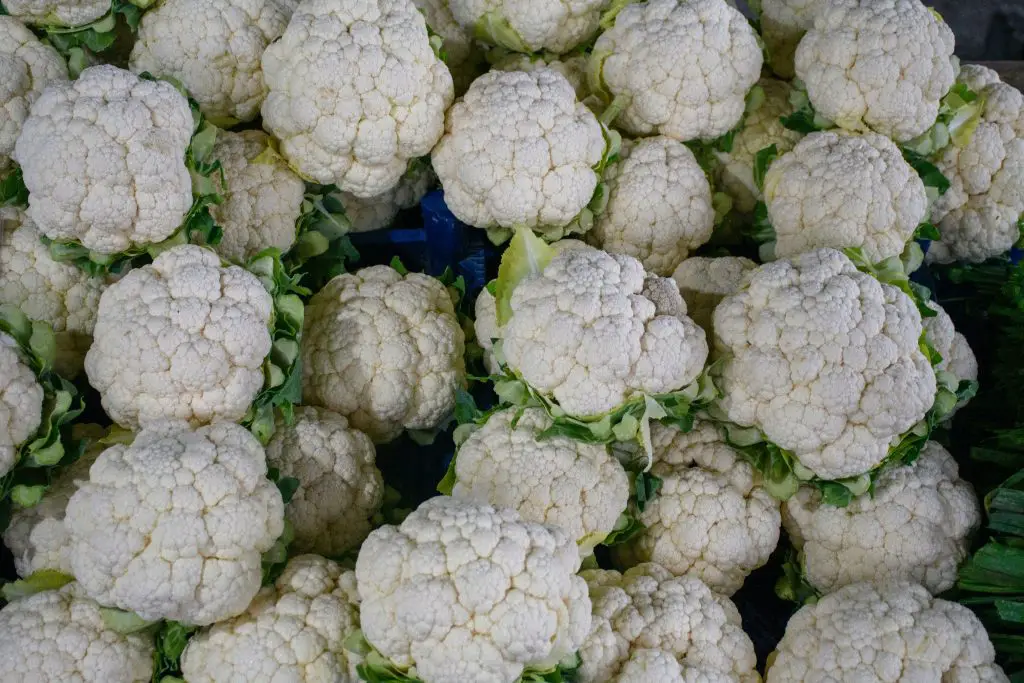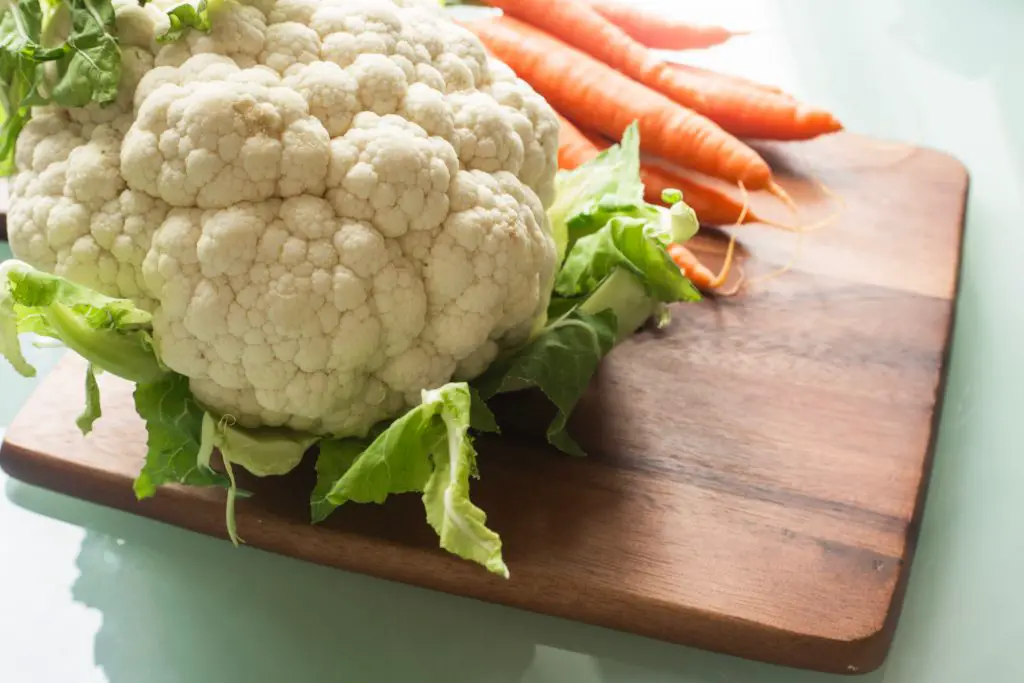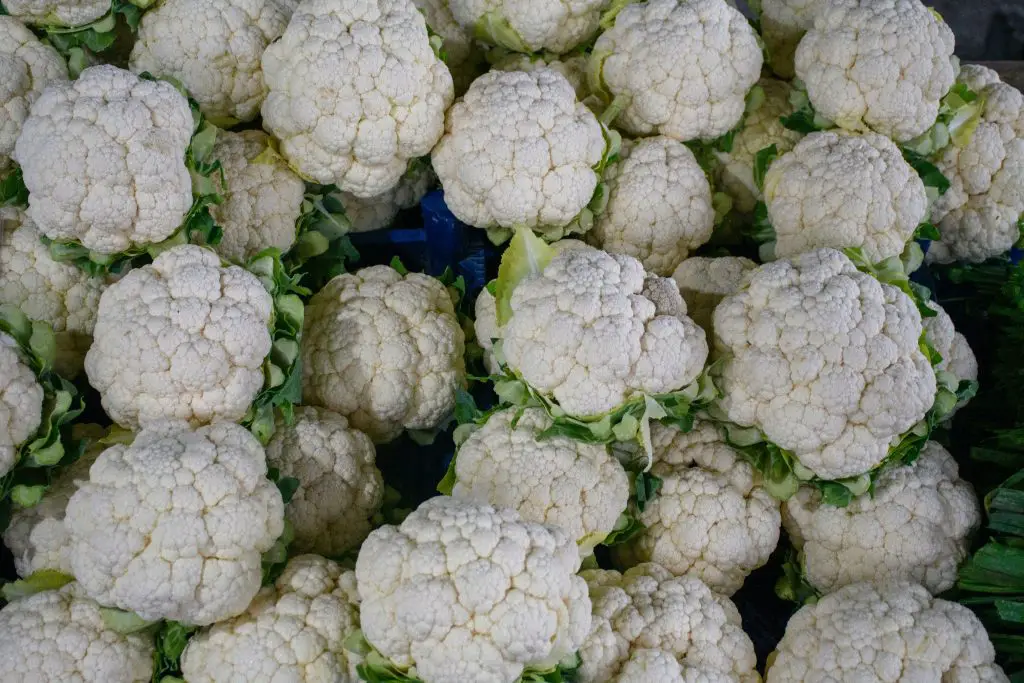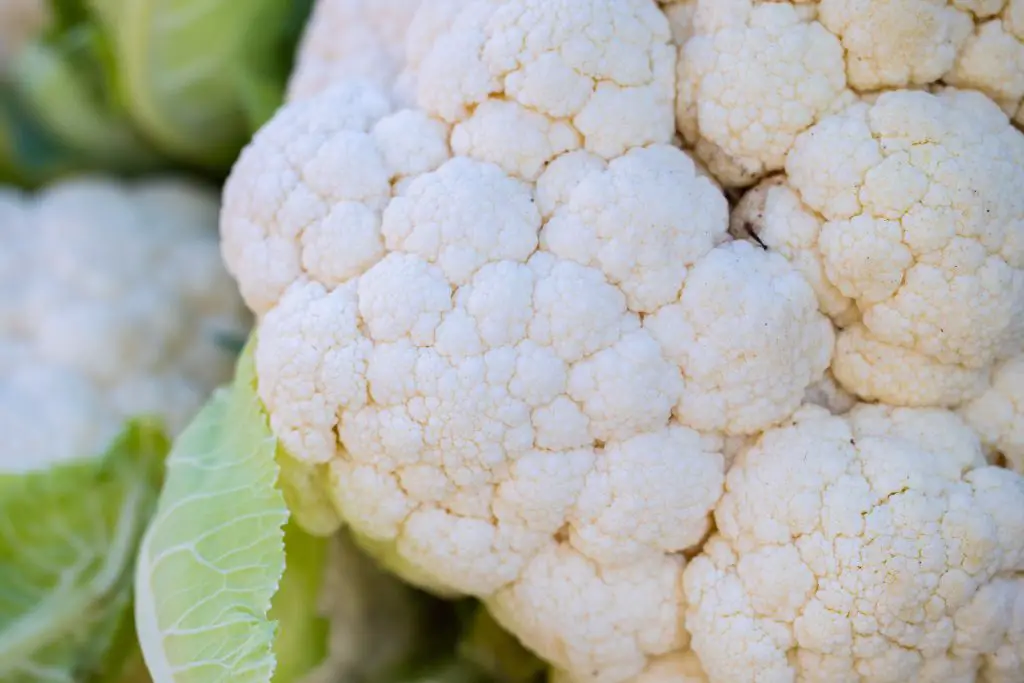Is Cauliflower A Flower? Cauliflower is one of the most popular vegetables eaten in the western world and it first appeared in Europe approximately 1000 years ago. The vegetable is commonly used in a wide range of cuisines around the world Including things like Indian, Chinese and European dishes. However, one of the most common questions that is asked is, is cauliflower actually a flower, if not what is it?
The section of the Cauliflower that we eat is in fact an immature flower of the plant which is usually picked at the point at which the Kurds of the head are tightly packed together to form a cloud-like appearance. However, this is only the first stage of the plant flowering and then eventually producing seeds.
If the plant is allowed to bolt the stalks within the flower head will start to shoot outward and produce long spindly structures with the flower buds on top which will eventually produce flowers that have yellow petals. And like all flowering plants, these flower heads will eventually produce seed, which can be collected for growing cauliflower the following year.
The head of the cauliflower will remain in its familiar format for an extended period of time if it is grown in relatively cool conditions however, as the weather warms up cauliflowers will very quickly bolt which destroys the quality of the head that we eat.

Are There Different Types Of Cauliflower
There is a range of cauliflowers varieties available to grow at home, however, the most common variety that is grown commercially is white-headed varieties. These varieties are specifically selected because they are self-blanching, which means that the outer leaves of the cauliflower grow over the top of the head protecting it from sunlight.
This property is advantageous for commercial growers because excessive exposure to sunlight will turn the head of cauliflower yellow which will produce an unsightly appearance, however, cauliflower that gone a little bit yellow is still edible.
Non-blanching varieties of white cauliflower are also readily available, however, these tend to be used by home gardeners because there is a little bit more maintenance required if you want to produce a completely white head. This problem can be easily overcome by simply using a peg to hold a couple of outer leaves over the head of the cauliflower which will protect it from sunlight.
Aside from the white varieties that are available there are also purple, green, and orange or yellow varieties of cauliflower that are available however they are rarely sold commercially and generally are only grown by home gardeners as a novelty. You can get the seed for varieties like this by visiting specialist seed merchants like seeds now, to visit them see the link below.
Can You Eat Other Parts Of The Cauliflower Plant
All parts of the Cauliflower plant are edible from the leaves to the stalks and of course the flowerhead. So if you have purchased a cauliflower from the local grocery store you can get full value by using the entire thing. Leaves can be used in things like soups and stews and have a similar texture to cabbage leaves.
This texture is not unexpected given that cauliflowers are actually the same species as cabbage, broccoli, kale, and kohlrabi. They are just a genetic variant within the species.
Can You Grow Cauliflower At Home
Cauliflower can easily be grown at home however it is a little bit more challenging to grow than other brassicas because it is more sensitive to variations in temperature as mentioned above. If you are planning to grow the plant at home it is best to either start seeds in late winter or early spring or alternatively sow them in mid to late summer for a harvest in late autumn or even winter.
Planting seeds at these times of the year will ensure that the flower heads are not exposed to relatively warm temperatures when they appear on the plant. If you want to ensure that you have cauliflower is available throughout the winter it is best to ensure that the cauliflower is beginning to produce its head just as the temperatures are beginning to decline.
This is ideal because it means that the cauliflower will remain in good condition in the garden for an extended period of time which will allow you to pick it as required when you need it.

How To Grow Cauliflower At Home
As mentioned above cauliflower is relatively easy to grow from seeds at home and can be sown directly into the garden, however, we generally recommend that you use a seed tray because it is easier to control the climatic conditions and also it reduces the amount of time that the vegetable spends in the garden which will leave space for other things to be grown.
To start the plants fill a seed tray with good quality seed raising mix and ensure that the soil is firmed into the individual cells within the tray to form solid plugs. This is advantageous as it will reduce root disturbance later on because the entire plug can be transplanted directly into the garden.
2 to 3 seeds should be planted in each cell at a depth of approximately half an inch. Multiple seeds are added to each cell to ensure that at least one plant germinates in each cell. If all the plants germinate it is best to remove the weakest seedlings leaving one seedling per cell.
The seedlings will need to spend approximately 4 to 6 weeks in the seed tray before they are large enough to plant out into the garden, typically plants should ideally be approximately 2 to 3 inches tall before transplantation occurs.

Transplanting Seedlings Into The Garden
Once the seedlings have reached the point where they are large enough to be planted out in the garden they should be placed in an area that gets at least 6 to 8 hours of sun per day and has rich moist and free draining soil with plenty of nutrients. If you’re unsure about the quality of your soil is advisable to add an additional bag of compost before planting.
The plants is should placed approximately a foot and a half apart as the plants are relatively large. When placing them into the soil it is important to also provide some protection against slugs and snails as they are highly susceptible to attack early on. To provide the protection sprinkle snail pellets around each seedling as they are planted and then mulch well and water the plants in.
Harvesting Cauliflowers
Once in the garden, the cauliflowers will take a while to get going. Plants typically reach 1 to 2 ft tall before they begin to produce their flower heads. Initially, the flower heads will be quite small when you first notice them, however, they will get progressively larger and you will need to keep a close eye on them the get larger particularly if the weather is starting to warm up as they can bolt readily.
Cauliflowers can be picked at any stage once the head is 3 to 4 inches in diameter, however, some varieties will produce much larger heads than that. If you have a glut of cauliflower is it is still important to keep a eye them to ensure that they do not show any signs of bolting.

If they begin to bolt they should be harvested immediately and frozen rather than left in the garden as they will quickly become inedible. Excess cauliflowers can be frozen easily by blanching the florets for a minute or two in boiling water.
Once the cauliflower head has been harvested it will not produce additional heads and can therefore be removed from the garden leaving space for something else to be grown.
I hope you have great success with your cauliflower at home and are able to produce a fantastic crop, if you have any additional comments or questions please leave them in the section below.
Relevant Articles
Can Cauliflower Grow In Summer?
How Many Cauliflowers Do You Get From One Plant?
Does Cauliflower Grow Underground?
How Long Does It Take Cauliflower Seeds To Germinate? How Does Temperature Effect It?

